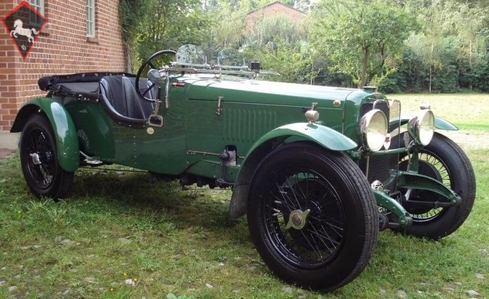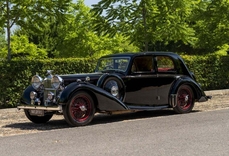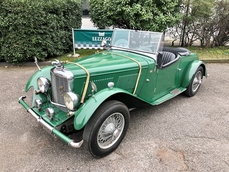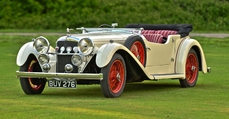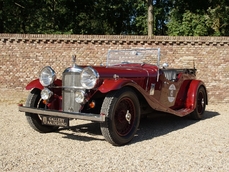Alvis Speed 20 Eagle 1931
General description :
Alvis was founded in Coventry in 1919. From the beginning they produced modern sport cars, solid as a rock and with fantastic engines. The “Silver Eagle” with the famous 6 cylinder engine came in the end of the 20s. This engine was developed constantly.Our Alvis Tourer is a late example. The 2.5 litre engine with three carburettors has a lot of power. The open tourer is equipped with stronger brakes and the gorgeous Speed Twenty transmission. This family racer is ready to use and can be driven on almost all historic events. It is easy to handle and very fast – so to all Bentleys: “Watch out.”
Body Style : Open Tourer
Year : 1931
Cubic Capacity : 2,511 cc
Engine : 6 cylinder inline
Power : 74 kW/100 hp
Transmission : manual transmission
Drivetrain : rear
Exterior Color : irish green
Interior : leather
Interior : Colorblack
Trim : revised
1931 Alvis Speed 20 Eagle is listed for sale on ClassicDigest in Lübberstedt by Steenbuck Automobiles GmbH for Not priced.
Car Facts
Car type : Car Make : Alvis Model : Speed 20 Model Version : Eagle Engine size : 2.5 Model Year : 1931 Location : Hainholzweg 1 Germany 21376 Gödenstorf-Lübberstedt Vehicle Registration : Undefined
Not priced
Seller Information
Steenbuck AUTOMOBILES GmbH
Steenbuck Automobiles GmbH
+49 (0)4175 802020
Steenbuck Automobiles GmbH
+49 (0)4175 802020
People who viewed this Alvis Speed 20 also viewed similar Alvis listed at ClassicDigest
Other cars listed for sale by this dealer
About Alvis Speed 20
The Alvis Speed 20 was a notable model produced by the British automobile manufacturer Alvis Ltd. Let's explore its history and highlight some significant moments:Introduction:
The Alvis Speed 20 was introduced in 1932 as a successor to the Alvis 12/60 model.
It was designed as a luxury sports car, combining performance, elegance, and advanced engineering.
Engine and Performance:
The Speed 20 featured a 2.5-liter straight-six engine with overhead valves.
It was available in various tuning configurations, including the standard 87 bhp version, as well as the more powerful 91 bhp and 99 bhp options.
The car's lightweight construction and powerful engine allowed it to achieve impressive performance for its time, reaching top speeds of around 90 mph (145 km/h).
Coachwork and Styling:
The Speed 20 was offered with a variety of coachwork options, including open tourers, saloons, dropheads, and coupés.
It featured sleek and elegant styling, often with flowing lines and art deco-inspired design elements.
Many coachbuilders, including Charlesworth, Vanden Plas, and Mulliners, created bespoke bodies for the Speed 20, allowing customers to customize their cars according to their preferences.
Sporting Successes:
The Alvis Speed 20 achieved notable successes in various motorsport events and competitions.
In 1935, a Speed 20 won the prestigious Le Mans 24 Hours endurance race in the 2-liter class, marking a significant moment for Alvis and solidifying the car's reputation for both performance and reliability.
End of Production:
The Speed 20 remained in production until 1936, after which it was succeeded by the Alvis Speed 25 model.
The Alvis Speed 20 is considered a significant model in Alvis's history, representing their commitment to engineering excellence, stylish design, and sporting achievements. Its combination of performance and luxury made it a desirable choice for discerning customers of the era.
